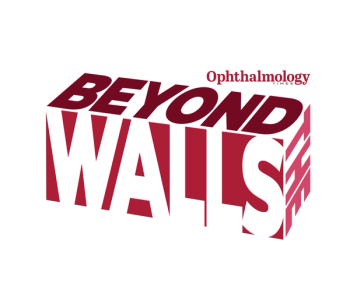
- Ophthalmology Times: October 2023
- Volume 48
- Issue 10
Long-read sequencing to reclassify variants of uncertain significance in IRDs
Technology allows partitioning of sequencing reads into 2 parental genome data sets.
Reviewed by Debarshi Mustafi, MD, PhD
Long-read sequencing technology may be emerging as an option to streamline haplotype analysis in cases in which genetic testing of family members is unfeasible to provide a complete genetic diagnosis,1 according to Debarshi Mustafi, MD, PhD, senior author, from the Department of Ophthalmology and the Karalis Johnson Retina Center at the University of Washington in Seattle.
According to Mustafi, by using this technology, the investigators could reclassify 5 variants of uncertain significance (VUSs) in inherited retinal diseases (IRDs) as likely pathogenic of the diseases. They explained that phasing genetic variation is critical for assigning causative variants in autosomal recessive (AR) diseases, which is the most prevalent inheritance pattern in IRDs.Thus far, more than 300 causative genes have been identified.2
Genetically diagnosing IRDs guides treatment decisions, facilitates access to FDA-approved treatment, and aids in patient selection of approved treatments in the future, the authors explained. The downside to this is that in 20% to 30% of AR IRD cases, 1 or no disease-causing variants are identified from short-read exome sequencing.3,4
“In nearly 20% of cases, genetic testing reveals at least 1 VUS,5 which are nondiagnostic but over time may be reclassified as likely pathogenic or pathogenic.6 Reclassification of a VUS can increase the molecular diagnostic rate of IRDs and provide patients and families with accurate recurrence risks,” the investigators emphasized.
Reclassifying VUSs is phasing patients’ genetic variants is one important study, as reported.7 The phasing of genetic variants is especially helpful in AR cases in which 1 pathogenic variant and 1 VUS are identified in a disease gene that fits the clinical phenotype. Next-generation sequencing generally cannot tell whether variants are in the cis or trans configuration, as the short-read lengths usually only span 1 variant.
This is where familial cosegregation analysis comes into play to show that 2 variants reside in trans. In this way, genetic testing of the patient’s parents resolves the chromosomal arrangement of the identified variants.8
If testing finds that 1 of the pathogenic variants was inherited from the father and 1 from the mother, this infers that the variants reside in trans on separate chromosomes. Haplotype analysis showing that variants residing in trans provides additional evidence to support pathogenicity for a VUS. When the parents cannot be tested, other family members may undergo genetic sequencing to determine whether the variants reside in trans.
Long-read sequencing technology
This emerging technology “allows the partitioning of sequencing reads into 2 parental genome data sets, genetically phasing an individual genome without the need for familial DNA analysis.”9
This is advantageous when family members cannot be tested, has potential for future efficient genetic phasing, and is cost-effective and does not require parental retesting.
“This technology is already being implemented in other fields of medicine, and there is a need for this technology in ophthalmic genetics,” the investigators commented.
In their study, they used traditional familial cosegregation analysis in 4 cases to decipher whether variants reside in cis or trans, which allows the reclassification of 4 VUSs into likely pathogenic/pathogenic.
In a fifth case, without familial data long-read sequencing to provide haplotype information with potential disease-causing variants in trans, it resulted in reclassification of the VUS as likely pathogenic.
A representative case
Case 2 was that of a 4-year-old girl with decreased vision, photophobia, and no family history of eye diseases. Electroretinography showed no photopic response with an electronegative waveform in scotopic conditions concerning achromatopsia. Genetic testing identified the most common pathogenic variant in CNGA3, c.1306C>T (p.Arg436Trp), and a second variant, c.1584G>C (p.Val529Leu), was a VUS.
The authors reported that in this case, “parental testing revealed that each variant was inherited from each parent, confirming their presence in trans [PM3]. The VUS was not present in the gnomAD database [PM2], but at that precise genomic location, another pathogenic missense variant, c.1585G>A [p.Val529Met], was present. This provides moderate evidence for a missense change at an amino acid where a different missense change is pathogenic [PM5]. Together, the 3 moderate criteria presented allow the reclassification of this VUS as likely pathogenic.”
“In this report, we reclassify 5 VUSs in IRDs as likely pathogenic and address methods through which long-read sequencing can alleviate the bottleneck of haplotype analysis using familial cosegregation analysis. Future studies may include using long-read sequencing to analyze and reclassify more VUSs in genes associated with AR IRDs without the need for parental testing,” Mustafi and colleagues summarized.
Debarshi Mustafi, MD
E: [email protected]
Mustafi, senior author of the study, is from the Department of Ophthalmology and Karalis Johnson Retina Center at the University of Washington in Seattle. He has no financial interest in this subject matter.
References:
1. Gupta P, Nakamichi K, Bonnell AC, et al. Familial co-segregation and the emerging role of long-read sequencing to re-classify variants of uncertain significance in inherited retinal diseases. NPJ Genom Med. 2023;8(1):20. doi:10.1038/s41525-023-00366-9
2. Daiger SP, Rossiter BJF, Greenberg J, et al. Data services and software for identifying genes and mutations causing retinal degeneration. Invest Ophthalmol Vis Sci. 1998;39:S295.
3. Bauwens M, Garanto A, Sangermano R, et al. ABCA4-associated disease as a model for missing heritability in autosomal recessive disorders: novel noncoding splice, cis-regulatory, structural, and recurrent hypomorphic variants. Genet Med. 2019;21(8):1761-1771. doi:10.1038/s41436-018-0420-y
4. Steele-Stallard HB, Le Quesne Stabej P, Lenassi E, et al. Screening for duplications, deletions and a common intronic mutation detects 35% of second mutations in patients with USH2A monoallelic mutations on Sanger sequencing. Orphanet J Rare Dis. 2013;8:122. doi:10.1186/1750-1172-8-122
5. Iancu IF, Avila-Fernandez A, Arteche A, et al. Prioritizing variants of uncertain significance for reclassification using a rule-based algorithm in inherited retinal dystrophies. NPJ Genom Med. 2021;6(1):18. doi:10.1038/s41525-021-00182-z
6. Fung JLF, Yu MHC, Huang S, et al. A three-year follow-up study evaluating clinical utility of exome sequencing and diagnostic potential of reanalysis. NPJ Genom Med. 2020;5(1):37. doi:10.1038/s41525-020-00144-x
7. Tewhey R, Bansal V, Torkamani A, Topol EJ, Schork NJ. The importance of phase information for human genomics. Nat Rev Genet. 2011;12(3):215-223. doi:10.1038/nrg2950
8. Snyder MW, Adey A, Kitzman JO, Shendure J. Haplotype-resolved genome sequencing: experimental methods and applications. Nat Rev Genet. 2015;16(6):344-358. doi:10.1038/nrg3903
9. Chaisson MJP, Sanders AD, Zhao X, et al. Multi-platform discovery of haplotype-resolved structural variation in human genomes. Nat Commun. 2019;10(1):1784. doi:10.1038/s41467-018-08148-z
Articles in this issue
about 2 years ago
Are your patients suffering in silence with dry eye disease?about 2 years ago
Geographic atrophy is taking center stageabout 2 years ago
Editorial: Education can change livesabout 2 years ago
Study offering new hope for medical presbyopia correctionabout 2 years ago
Shape shifting: A punctal plug that fits securely into the punctumabout 2 years ago
Pearls for integrating dry eye disease management into your practiceabout 2 years ago
Early treatment of GVHD in the ophthalmology setting is criticalNewsletter
Don’t miss out—get Ophthalmology Times updates on the latest clinical advancements and expert interviews, straight to your inbox.



















































.png)


